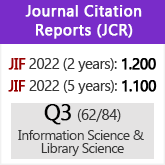New perspectives to evaluate patents as a part of the scientific curriculum
DOI:
https://doi.org/10.3989/redc.2007.v30.i2.380Keywords:
patent evaluation, scientific results, scientific activity evaluationAbstract
During the last years the consideration of the patents as part of the scientific curriculum has been changing from the activity of technologists and researchers devoted to applied science to a fundamental part of the scientific curriculum of well-known researchers. Some time ago, patents were simply not considered in teaching evaluation at University or its equivalent at CSIC (Spanish National Research Council) and only considered as a second range parameter in the scientific evaluation. In promotion competition they have change from a marginal factor when the number of papers and their impact factor were comparable, to become a decisive factor or even a «sine qua non» condition in specific areas. As it happens to a great extent in publications, the number of patent applications is not an indicator of the quality or importance of the knowledge they present; however their monopoly of exploitation and its costs makes patents totally different and introduces variables difficult to quantify in scientific evaluation. Changes in CSIC legal structure and management definition as a Key Institution in the Spanish Innovation System and the fact of its being the most active patent applicant (5th public institution as EPO applicant), besides the changes in its Technology Transfer management, should affect the decision to patent. Its value in research activity acknowledgement requires more precise indicators to reflect «ex ante» its impact on the scientific community as well as on society welfare, because at the end of patent life its real market incidence shows the impact of the research results presented in a patent.
Downloads
References
Albert, A.; Plaza, L. M. (2004). The transfer of knowledge from the Spanish public R&D system to the productive sectors in the field of biotechnology. Scientometrics, 59 (1): 3-14.
Análisis de los incentivos fiscales a la innovación. IDETRA (Innovación, Desarrollo y Transferencia de Tecnología, S. A.) y CEIM (Confederación Empresarial de Madrid- CEOE) Editores M-2750-2004. Editorial Dirección General de Investigación, Consejería de Educación, Comunidad de Madrid, 2004
Buesa, M. (2002). El sistema Regional de Innovación de la Comunidad de Madrid. Documento de trabajo n.º 30, Instituto de Análisis Industrial y Financiero. UCM.
Day, R. A. (1996). Cómo escribir y publicar trabajos científicos. Washington OPS.
Dent, C.; Jensen, P.; Waller, S.; Webster, B. (2006). Research Use of Patented Knowledge: A review, STI Working Paper 2006/2 OECD Directorate for Science, Technology and Industriy (STI).
Documento de Trabajo OTT/ 2005 Javier Etxabe Oria.
Documento sobre oportunidades tecnológicas COTEC n.º 17 (2000). Aspectos Jurídicos de la Gestión de la Innovación. Documentos Cotec sobre oportunidades tecnológicas. Ed Fundación Cotec para la Innovación Tecnológica. Depósito legal: M. 26.462-2000.
Estudio COTEC n.º 29 (2004). Transferencia a las empresas de investigación universitaria. Descripción de modelos europeos. Mario Rubialta Alcañiz, Ed. Fundación Cotec para la Innovación Tecnológica. ISBN 8495336-49-9.
Ginarte, J. C.; Park, W. (1997): Determinants of Patent Rights: A Cross National Study, Research Policy, 26 (3), 283-301.
Guasch, L. M.; Díaz-Núñez, P. (2002). Fiscalidad Pura vs. Fiscalidad Aplicada. Acta Científica y Tecnológica, 4, 30-36.
INDICADORES DEL SISTEMA ESPAÑOL DE CIENCIA Y TECNOLOGÍA 2004 MINISTERIO DE EDUCACIÓN Y CIENCIA. http://www.mec.es/mecd/estadisticas/ciencia/indicadores/Indicadores_2004.pdf
OECD (2003). Tax incentives for research and development: trends and figures. París: OECD.
Park, W. G.; Smita, W. (2002). Index of Patent Rights. Economic Freedom of the World, 2002 Annual Report.
Plan de Actuación del CSIC 2006-2009. Consejo Superior de Investigaciones Científicas, 219 p + cd-rom. Depósito legal M-38059-2006.
Pérez-Díaz, V.; Rodríguez J. C. (2005). Desarrollo tecnológico e investigación científica en España. Balance provisional de un esfuerzo insuficiente de catching up. 2005. Estudios, Eds. Fundación Iberdora. ISBN: 84-609-6256-3, 116 págs.
Represa-Sánchez, D.; Castro-Martínez, E.; Fernández de Lucio, I. (2005). Encouraging Protection of Public Research Results in Spain. Journal of Intellectual Property Rights, vol. 10, septiembre, 382-8. DSTI/DOC 2005/9. Analysing European and international patent citations: a set of EPO patent database building block. Statistical Analysis of Science, Technology and Industry. Colin Webb and Hélène Dernis, OECD; Dietmar Harhoff and Karin Hoisl, LMU (Ludwig- Maximilians-Universität, Munich).
Thumm, N. (2006). A new research exemption for Switzerland: empirical findings and the draft revision of the patent law. En Research Use of Patented Inventions, CSIC/OECD/ OEPM conference abstracts, Madrid, mayo, p. 13-14.
Valdés Quiles, G.; Ayuso Ayuso, A.; Rico Albert, E. J.; Más Hernández, M. (2002). Características de las variedades de vanguardia del almendro. Vida Rural, Eumedia Eds, Madrid, n.º 146, 1 de abril.
Downloads
Published
How to Cite
Issue
Section
License
Copyright (c) 2007 Consejo Superior de Investigaciones Científicas (CSIC)

This work is licensed under a Creative Commons Attribution 4.0 International License.
© CSIC. Manuscripts published in both the printed and online versions of this Journal are the property of Consejo Superior de Investigaciones Científicas, and quoting this source is a requirement for any partial or full reproduction.All contents of this electronic edition, except where otherwise noted, are distributed under a “Creative Commons Attribution 4.0 International” (CC BY 4.0) License. You may read here the basic information and the legal text of the license. The indication of the CC BY 4.0 License must be expressly stated in this way when necessary.
Self-archiving in repositories, personal webpages or similar, of any version other than the published by the Editor, is not allowed.

















